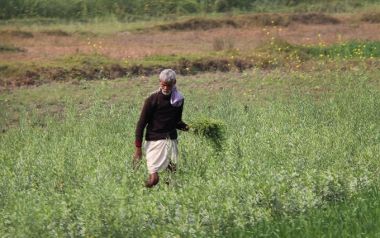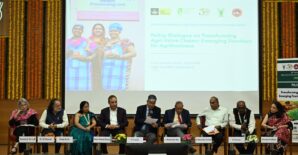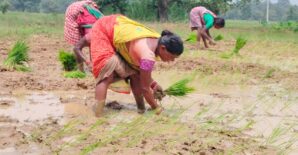Anjani Kumar and Sunil Saroj
India’s 2019 interim budget makes a tectonic shift in providing support to Indian farmers. Under the Modi government’s ambitious direct benefit transfer program, the Pradhan Mantri Kisan Samman Nidhi (PM-KISAN) scheme, each farmer having less than 2 ha of land will get 6000 rupees ($86) per year. This amount will be transferred directly to farmers’ bank accounts in three installments; the first was made on Feb. 24. About 120 million farmers—87% of the total nationwide—are likely to benefit from this program, which will cost $10.7 billion per year.
The program launch has generated a serious discussion in the Indian policy discourse. The announcement’s timing made it to appear to be a politically motivated move to appease the farming community on the eve of the national election running April 11-May 19. However, the move’s substance is undeniable: It is a clear departure from the existing system of farm support. Reversing it would be almost impossible for any political party coming into power. Therefore, this mega-intervention and policy change must be analyzed in the proper perspective. Is PM-KISAN more efficient, effective, and equitable than pre-existing mechanisms of farmers’ support?
According to the Situation Assessment Survey of Farmers 2013 (SAS-2013), the average monthly income and expenditure of marginal farmers (<1 ha) was $68 and $85, respectively, and for small farmers (1-2 ha) $107 and $97, respectively. Adjusting for 2017-18 prices, these figures for marginal farmers are about $69 and $87, respectively and for small farmers is $110 and $99, respectively. The addition of $86 per year will increase the average income of marginal and small farmers by 10.3% and 6.5%, respectively. The inclusion of 87%of all marginal and small farmers makes this program more inclusive than any other existing support schemes in Indian agriculture. More than 90% of farmers in some states would receive benefits, including West Bengal (98.2%), Jammu & Kashmir (97.3%), Uttaranchal (97.0%), Sikkim (96.8%), Himachal Pradesh (96.6%), Bihar (96.1%), Jharkhand (96.0%), Kerala (95.6%), Tripura (95.3%), Odisha (95.0%), Uttar Pradesh (94.0%), Manipur (93.6%) and Assam (92.6%).
Increase in income
Between 2003-2013, income growth for agricultural households was around 5.5% per year; agricultural GDP growth during the same period was 3%. For reaching Prime Minister Narendra Modi’s stated goal of doubling farmers' income, 10.4% annual growth is required every year until 2022-23. With PM-KISAN, then, marginal farmers would come close to doubling their incomes—reaching a 90% increase by 2022-23. For small farmers the figure is 74%. Meanwhile, the incomes of marginal farmers in six states—Bihar, Uttar Pradesh, Chhattisgarh, Uttaranchal. West Bengal and Madhya Pradesh—would increase by 114%, 106%, 105%, 104%, 103%, 102%, respectively. Marginal farmers from Andhra Pradesh, Jharkhand, and Odisha will also increase their income by more than 90%.
Promote equity
Our research suggests that this direct income support will not only increase income but also dramatically reduce inter-and-intra income inequality and improve consumption patterns. The average Gini Coefficient—a measure of inequality—was 0.21, and will decrease to 0.17 after PM-KISAN. For marginal and small farmers, the figure is projected to decline from 0.23 to 0.18 and 0.21 to 0.18, respectively, by 2022. In fact, the ratio between marginal and small farmers’ income will decline from 1.58 in 2015-16 to 1.43 in 2022-23.
Enhancing consumption expenditures
PM-KISAN’s $86 per year equals an entire month of extra support to farmers. Our analysis reveals that in 14 out of 28 states, marginal famers will surpass current consumption expenditures for more than a month with this income transfer. Overall, this means their consumption will increase by about 10%. This would help improve farmers’ food security and can support purchase of better seeds, fertilizer, and other inputs.
The way forward
In addition to implementing PM-KISAN, the government should now vigorously promote direct benefit transfers for agricultural and food subsidies. These would further increase inclusiveness and promote regional and class equity. However, the prerequisites for implementation of PM-KISAN are proper land records, along with an appropriate strategy for targeting and identifying farmers. Measures should be developed to include landless tenant farmers in these ambitious initiatives.
Anjani Kumar is a Research Fellow with IFPRI's South Asia Region (SAR) in New Delhi; Sunil Saroj is an SAR Research Analyst. Opinions are the authors'.
Cross-posted from IFPRI.org




